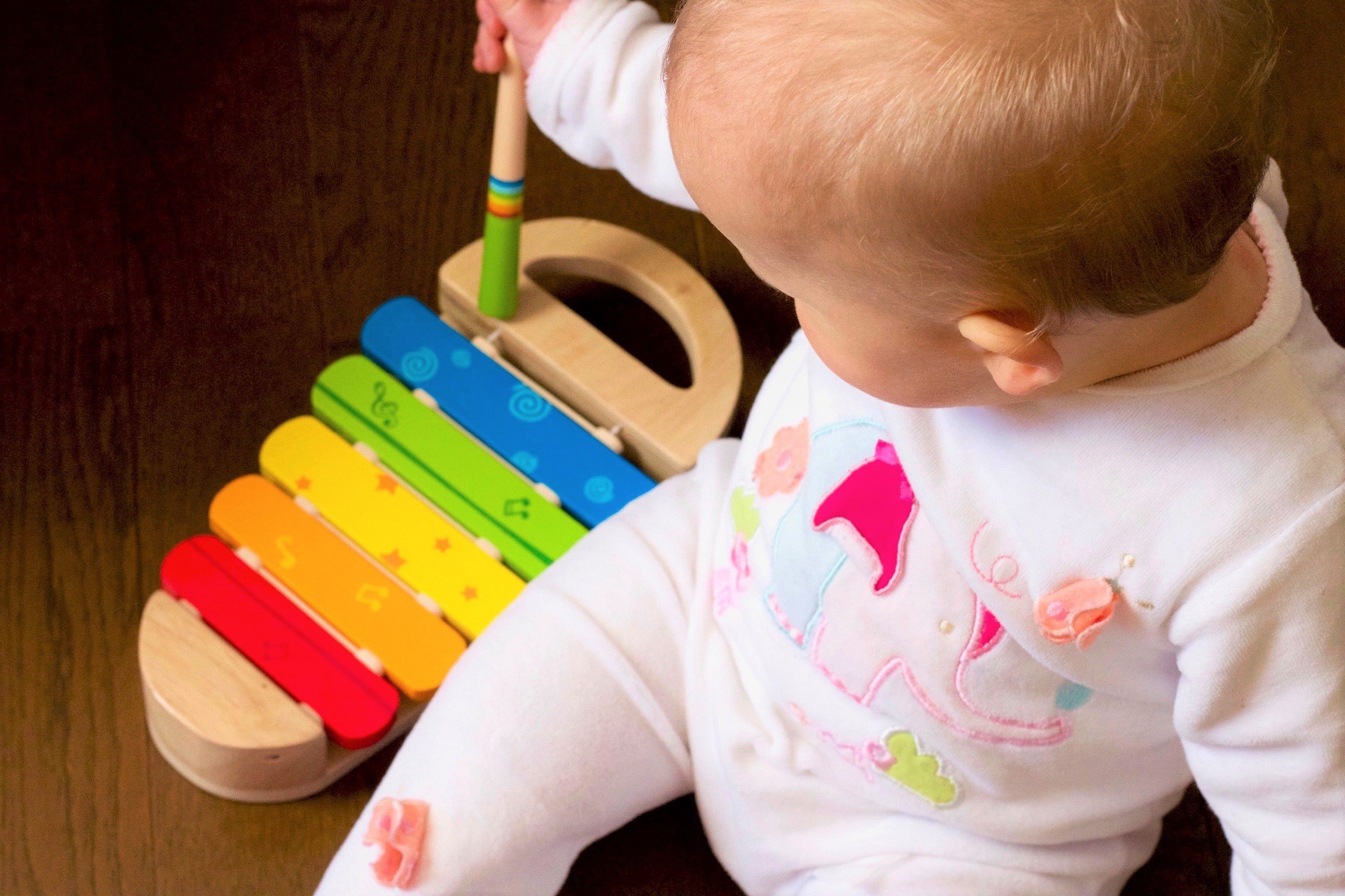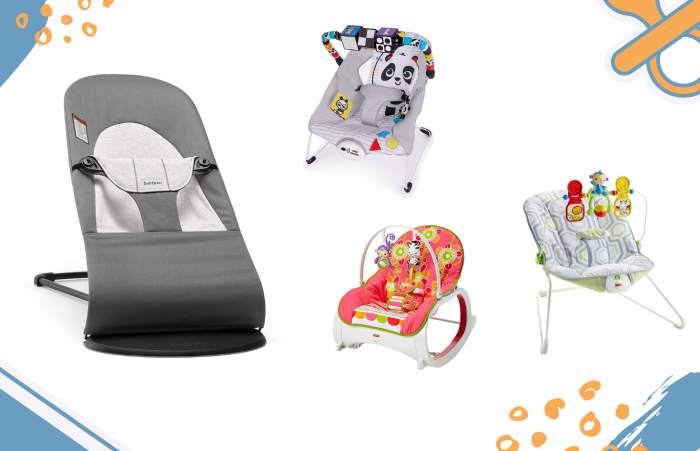What are the best baby walkers for carpets? Let’s find out in today’s post
At about six to nine months, many babies start exploring their surroundings by using walkers, tricycles, or jumpers.
To keep babies safe, baby walkers are usually used indoors and on a carpeted surface so that if your little child falls, they will not get hurt too bad. That’s why many parents are searching for the best baby walker for carpet use.
We rounded up the most popular baby walkers that are available on the market today and tested them on various surfaces, including different types of carpets. Here are our top picks for baby walkers for carpets.
Our Top Picks
1. Best Overall Baby Walker for Carpets
Sit-to-Stand Learning Walker by VTech
Pros
Cons
Does it roll well on carpets?
The wheels on this push walker are large. This makes it easy to travel steadily on both shallow pile and deep pile carpets. There is a two-settings speed adjuster on one wheel so that you can change the tension on the wheels. If you have carpets with deep piles, the friction will be too high for the walker to move smoothly. Therefore, you can loosen the wheels so that your baby won’t get frustrated by a stalling walker.
On the other hand, if you use this walker on a hardwood floor or short-piled carpets, the tighter setting is better. Not only that the walker can roll effortlessly, but it also prevents your little one from leaning forward and falling on the floor.
Who is it for?
For under $35, this walker can be used from 9 months of age to about 3 years. The play panel can be disassembled to use separately as a toy for toddlers. It has lots of sounds and activities that stimulate your little one’s senses.
Is it portable?
This walker can fold flat so that you can easily move it to other rooms, pack it in your car, or store it away when your little one outgrows it.
Overall
Among all baby walkers we assessed, the VTech Sit-to-Stand Learning Walker is absolutely the best push walker for both carpet floors and hardwood floors. Provided that your baby is physically mature enough to stand on her feet and knows how to push. This baby carpet walker has speed settings, lots of activities, and a detachable busy board.
2. Most Comfortable Baby Walker for Carpets
Spoon Walker by Joovy
Pros
Cons
Design – Joovy Spoon Walker is a high-end single-purpose walker. From its sleek, modern, and simple design, to the premium BPA, PVC, and phthalate-free material, it is one of the most comfortable and high-quality baby walkers on the market. Your little one will love the extra padding on the seat because it feels more comfortable. The Joovy Spoon Walker also folds flat to save storage space. The wheels roll smoothly on many types of flooring including carpets.
Safety – From safety’s standpoint, the tray is intentionally designed to be over-sized, so that babies cannot touch other objects while traveling around the room. The wheels are configured in a way that if your baby slides over to an edge, the walker stops rolling any further. This prevents falling over.
Height Adjustment – However, a common complaint is that it doesn’t raise high enough for some babies. Make sure that it will accommodate your little tot’s height for at least a few months.
Overall – The Joovy Spon Walker is for parents who want to provide better mobility to their babies before they can walk. It is the most comfortable baby walker for carpet use. However, as an upscale baby walker, it costs nearly $100 dollars and can be considered expensive by many parents.
3. Best Hybrid Baby Walker for Carpets
4-in-1 Activity Center Walker By Baby Einstein
Pros
Cons
Safety – Rather than allowing your baby to move freely in any direction, the Baby Einstein 4-in-1 Walker can only be moved around a stationary activity center. This AWARD-WINNING design is a good combination of mobility and safety. It provides your baby the independence they crave, yet prevents them from rolling over and get hurt.
Rolls on Carpets – The stationary activity center stays steady on both hardwood floors and carpeted floors, while the two wheels roll easily on both types of floors as well.
Age Range – This walker is for 6-month old babies or older. Once your baby outgrows from the walker, you can disassemble it and use the activity center by itself. There are 15 activities on the desk, including a fun piano board!
Overall – If you want to get a baby walker but are worried about safety issues, this 4-in-1 Activity Center Plus Walker is a great option to consider. It is the best hybrid baby walker for carpet floors that ensures the maximum safety.
4. Best Combo Baby Walker for Carpets
3-in-1 Baby Walker by Stockcraft
Pros
Cons
Age Range – This is one of the few walkers that are suitable for babies as young as 4-month0old. If your little one likes to sit upright at an early age and is developing on track, this walker is a fantastic choice for you.
Functionality – This activity center can turn into three different devices in a few simple steps: a stationary jumper with a jumping board, a walker, and a stationary rocker.
Rolls on Carpets – The wheels on this walker are relatively small. They are designed to roll on hard surface flooring or short-piled carpets only.
Overall – This 3-in-1 Walker and Activity Center Combo is a great choice for parents who want to introduce walkers early to their little tots.
5. Most Versatile Baby Walker for Carpets
Baby Sit to Stand Walker by NuoPeng
Pros
Cons
Convertibility – The feature that most parents love about this walker is that it can convert to an activity board and a drawing board. It can entertain your baby for years to come. Additionally, the triangle design makes it sturdy and not easy to tip over.
Rolls on Carpets – This walker features a speed control of two settings. You can adjust the speed based on your baby’s age and strength, as well as the type of carpet you use it on. The wheels on this walker are a bit small but travel well on carpets with short piles. Therefore, if your carpet has long piles and has extra padding, this is not a good recommendation.
Overall – If you don’t want to buy another big piece of single-purpose toy, this walker is a good option. It is the best push-style baby walker for carpet with short piles.
Is Your Baby Ready for A Walker?
The followings signs may indicate that your baby is ready for a walker:
- Sits upright without support
- Can crawl or starts to attempt crawling
- Tries to pull herself up
- Enjoys to stand with your assistance
- Is 6 months or older
Why You Should Buy A Walker?
There is no consensus on whether there is more benefit or harm for an infant to use a baby walker. Just like everything else in life, baby walkers have their advantages and disadvantages. Therefore, your task as a parent is to be educated about both sides and make a choice based on your child’s specific situation. The benefits of using a baby walker are:
- Sitting upright in a walker gives the baby a new perspective. They are able to see things from a different angle and are able to move to places on their own. It satisfies their curiosity and invites them to explore. If your baby is not ready for a walker yet, a baby bouncer can help keep her in an upright position and prevent reflux or vomiting.
- To move in a walker, a baby learns to use their legs effectively. It helps improve the coordination among their hands, eyes, and legs.
- All babies love to be in a walker. They feel entertained and thus have a better mood. Happy baby, happy mommy. Staying satisfied and content is important for your baby’s mental well-being.
- While exploring her surroundings, your baby receives all kinds of stimulation. Different objects, colors, sounds…They are beneficial for the development of your baby’s cognitive skills.
- It cultivates a sense of independence and helps establish confidence.
Popular Types of Walkers
There are two types of baby walkers available in today’s market: the traditional sit-to-stand walkers and the modern stroll-to-discover walkers (or push walkers). Some newer designs can even convert between these two.
Sit-to-stand
This type of baby walker comes with inclusive seats. It usually has a tray for toys or food. Its height is usually adjustable.
The sit-to-stand is a good starter walker for babies as it provides more physical support. Since it doesn’t require your baby to use her hands, she has more freedom to explore and touch things.
The disadvantage though is that they are big and can take a lot of space.
Stroll-to-discover (Push walker)
Push walkers don’t have a seat. Instead, babies need to stand on their feet, lean on the walker, and use their hands to push the walker in order to move around.
A push walker helps strengthen your baby’s arm muscles and strengthen their sense of orientation and balance. Push walkers usually come with an activity board in the front. Some of them can also turn into an activity table. They are more multi-functional and can be used for a longer time.
The disadvantage is that it requires the baby to be able to stand on her own and to have a better balance. If a baby doesn’t understand that they must have their hands on the walker, instead let go of their hands to reach other objects, they may fall.
Guide to Selecting the Best Baby Walker for Carpets
Not all baby walkers are created equal. In general, these are the guidelines when selecting the best baby walker for carpet:
- Choose a baby walker with safety mechanisms to prevent falling. For example, wheel locks, wheel lifts, and friction strips.
- Choose a baby walker with adjustable height.
- Choose a baby walker with a wide padded seat. Like carriers, walkers with narrow seats may cause hip dysplasia and dislocation. A wider seat is more comfortable for your baby’s hips.
- Consider the folding size if you want to save space. Some walkers can be folded flat for easy storage.
Not all baby walkers can move swiftly on carpets. Walkers designed to use on carpets usually have bigger wheels and different rolling mechanism. In addition, some walkers are better for short-pile carpets and some are good for deep-pile carpets.
FAQ’s About Baby Walkers For Carpets
Do Baby Walkers Work on Carpets?
Not all baby walkers are designed to be used on carpets but all the five walkers we reviewed above are good on carpets. To be able to travel well on deep-piled long carpets, look for a walker that has bigger wheels and preferably adjustable speed. Some walkers, such as the Joovy Spoon Walker, has medium-sized wheels but also rolls well on most carpets.
How to Make Baby Walker Move on Carpets?
It’s very important to keep in mind that if the baby walker you use is not designed for carpet use, do not modify it in any way. Walkers with smaller wheels are meant for floors with hard surfaces such as hardwood, vinyl, or tiles. Only a handful of walkers travel well on both carpets and hardwood floors. To make your baby walker move better on carpets, decrease the tightness on the wheels by turning the speed adjuster.
When Can A Baby Start Using A Walker?
Most baby walker manufacturers recommend that the starting age is 4 to 6 months. While most doctors recommend waiting till 6 to 8 months.
There is no golden standard. The minimum requirement is that your baby must be able to hold her head up steadily and effortlessly and that she is tall enough to touch the floor when placed in a walker.
What Can I Use Instead of A Walker?
Many parents are not fully comfortable with a baby walker. That doesn’t mean there are no other ways to help your little one to learn walking. If you are hesitant about getting a walker or you couldn’t find a good baby walker that rolls well on carpets, here are some alternatives that you can consider:
1. Playpens – A playpen is a surrounded area with gates or walls where your baby can be confined inside. A playpen is not an activity toy but it provides a safe area for your little one to explore. There are many things your baby can do to help him develop stronger legs and improve overall body coordination – which is crucial for him to learn to walk in the next couple of months.
2. Bouncers – Unlike a push-walker, a bouncer usually doesn’t move around. This eliminates the concern of walkers bumping dangerous household items or rolling into unsafe places. Your baby is still able to practice using her legs by jump up and down. It lets your little tot feel what it is like to be on her feet. That’s why we also recommended the 3-in-1 Baby Walker by Stockcraft because it can convert between a walker and a stationary bouncer and works well on carpets.
3. Jumpers – There are many different types of baby jumpers – some can be fixed to the ceiling, some can be hand-held, and some can free-stand. Like a bouncer, a jumper lets your baby learn to work his legs and feet. The advantage of a jumper is that your baby is not confined inside the toy but can move his body around. The disadvantage is that you have to install it or use a lot of space for a free-standing one.
Conclusion
Despite the conflicting researches about baby walkers, we have to admit that babies love to use them and they give our little ones a chance to be on their feet. For those who have carpeted floors, Sit-to-Stand Learning Walker by VTech is your best choice that is both child- and parent-friendly.
![Best Baby Walkers for Carpet in [current_year] 7 Cecilia Yeung Profile Picture](https://littlediscoverer.com/wp-content/uploads/2022/01/1611610585425.jpg)
Cecilia Yeung is a successful entrepreneur and product researcher. She has a background in psychology and children’s education. As a working mother of two, she loves to write about children’s education and development.

![Best Baby Walkers for Carpet in [current_year] 1 The Best 5 Baby Walkers for Carpets](https://littlediscoverer.com/wp-content/uploads/2020/04/Copy-of-Best-Retractable-Baby-Gates-for-Safe-Play-2-768x553.jpg)
![Best Baby Walkers for Carpet in [current_year] 2 Best Baby Walker for Carpet](https://littlediscoverer.com/wp-content/uploads/2020/04/Image-1.jpg)
![Best Baby Walkers for Carpet in [current_year] 3 Most comfortable baby walker for carpet: joovy Spoon Walker](https://littlediscoverer.com/wp-content/uploads/2020/04/Image-3.jpg)
![Best Baby Walkers for Carpet in [current_year] 4 Baby Einstein Around We Grow 4-in-1 Walk Around Discovery Activity Center Table](https://littlediscoverer.com/wp-content/uploads/2020/07/Image-1.jpg)
![Best Baby Walkers for Carpet in [current_year] 5 Storkcraft 3-in-1 Activity Walker and Rocker with Jumping Board and Feeding Tray, Interactive Walker with Toy Tray and Jumping Board for Toddlers and Infants](https://littlediscoverer.com/wp-content/uploads/2020/04/Image-3-2.jpg)
![Best Baby Walkers for Carpet in [current_year] 6 NuoPeng 3 in 1 Baby Sit-to-Stand Walker, Activity Center, Entertainment Table, Drawing Board](https://littlediscoverer.com/wp-content/uploads/2020/04/Image-3-3.jpg)
![Best Baby Monitor for Travel in [current_year] 8 Best Baby Monitor for Travel](https://littlediscoverer.com/wp-content/uploads/2022/01/bastien-jaillot-eJwSOguD1rE-unsplash.jpg)




